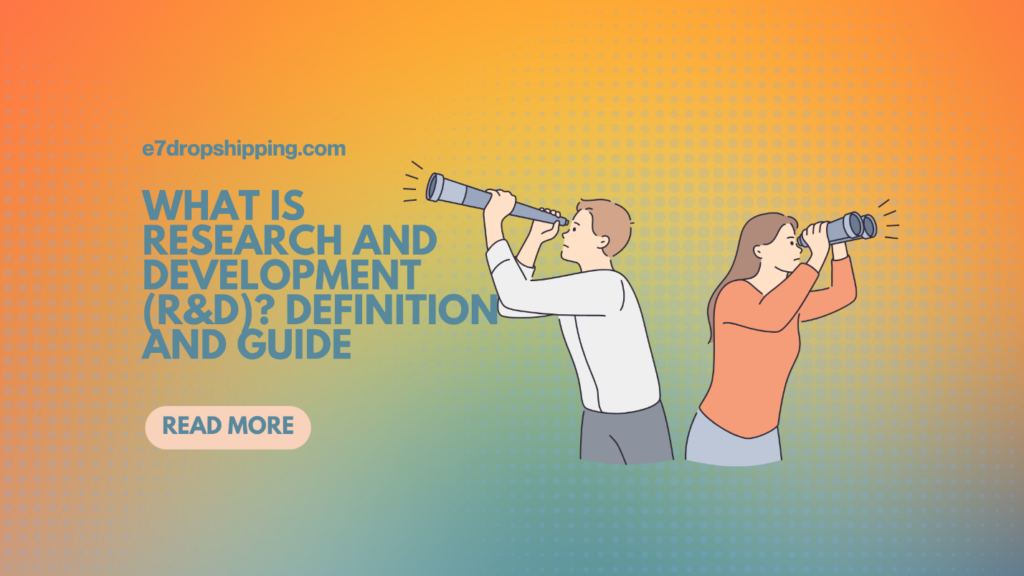When it comes to the products and ideas that alter and reshape our society, it might be easy to imagine them erupting from a solitary moment of inspiration (think Isaac Newton and the apple) (think Isaac Newton and the apple).
The truth, however, is that in any business, the most inventive and successful products are often the result of years of study, experimentation, and hard labor. That process is known as research and development—and whether you\’re running a high-tech Fortune 500 Corporation or a little online store, it may be the first step to extraordinary success.
In this article, you\’ll understand the concept of research and development, as well as the potential rewards and hazards of investing in the activity.
What is research and development?
Research and development, commonly known as R&D, is the process through which a corporation tries to generate new information that it might utilize to build new technologies, goods, services, or systems that it will either use or sell.
Many people think of pharmaceutical and technology companies when they hear “R&D,” but other firms, including those that create consumer products, devote time and resources into R&D as well. For example, a spaghetti sauce brand\’s many versions on the original product – “Chunky Garden,” “Four Cheese,” and “Tomato Basil Garlic”– are the fruits of considerable R&D.
Any business that makes and sells a product or service, whether it\’s software or spark plugs, engages in some amount of R&D.
Basic vs. applied research
Basic research (also known as fundamental research) is focused on expanding our understanding of a particular problem or phenomenon via study of major questions. Some examples of basic research questions are:
-
Why do mice get caught in traps?
-
Why are some individuals allergic to gluten?
While basic research can clearly assist a corporation learn new knowledge, its focus on research for its own purpose means that the financial rewards are dubious. Consequently, this type of research and development is primarily undertaken by huge firms, universities, and government entities.
Applied research
Applied research is also done to acquire knowledge. But unlike fundamental research, it\’s done with a specific aim, use, or product in mind. Where basic research is theoretical, applied research is practical, with a focus on finding workable answers for contemporary challenges. Some examples of applied research questions include:
-
How can we make a better mousetrap?
-
What mix of flours will yield the greatest gluten-free pie crust?
-
Why invest in research and development?
While the overarching purpose of research and development is to add to a company\’s bottom line, organizations pursue R&D for a variety of reasons.
Create new and enhanced products: Whether you\’re beginning a new firm, or trying to extend your present services, innovation research can help you fulfill client needs for new and better solutions that solve their problems more quickly and easily.
Increase company efficiency: R&D may help you obtain knowledge about your manufacturing processes, business structure, and location in the market, delivering insights that increase productivity by eliminating time-consuming inefficiencies and allocating resources to the most impactful projects.
Reduce costs: Profits aren\’t the only way that research and development can pay off. In fact, many organizations focus their R&D on upgrading current technologies and processes for internal use, reducing the overall cost of bringing your items to market.
Remain competitive: Research and development is a terrific method to remain ahead of the competition. By investing in developing technologies that improve your products, you can obtain a competitive edge over even the most established enterprises.
Secure investment: Even if your research efforts aren\’t immediately profitable, they may signpost to future inventions or advancements that investors are enthusiastic to support.
Who manages research and development?
Often, research and development is conducted in house by an internal department in a corporation, but it can also be outsourced to a specialist or a university. Large international organizations might do all three, and some of the outsourced work might be done in another country so that the corporation uses both the talent and local market experience there.
Outsourced R&D is especially tempting to the small business owner who has a novel product concept but has the design or engineering staff needed to build and test solutions. Solopreneurs that sell software as a service are an example on the lowest scale, as they sometimes outsource the R&D and consequent software development.
R&D and accounting
There are no assurances when it comes to research and development, and it\’s quite unlikely to lead to an immediate profit. Often, a corporation will spend a big amount of money in quest of a better method, material, or drug, yet never see a return on the investment. In this view R&D is not an asset: it\’s a commercial expense. For that reason, normal accounting standards and procedures demand that most (but not all) costs related with research and development be charged to expense as incurred.
That so, firms can reduce some of the impacts of research and development by exploiting federal tax benefits and deductions targeted on supporting R&D.
